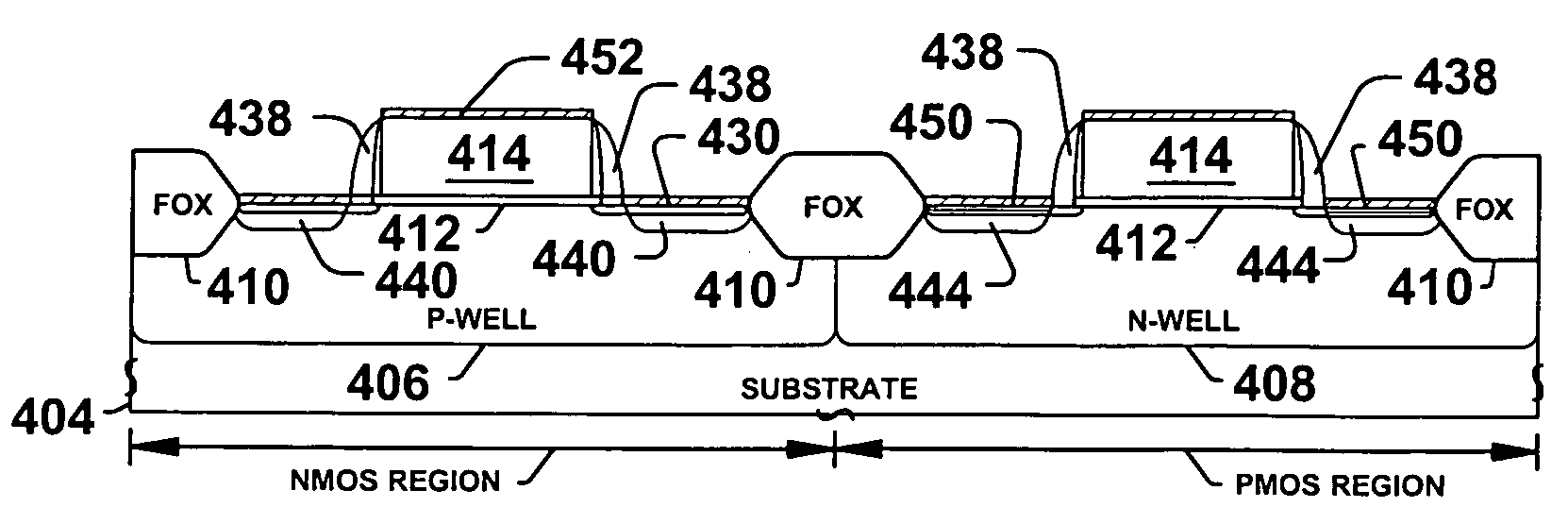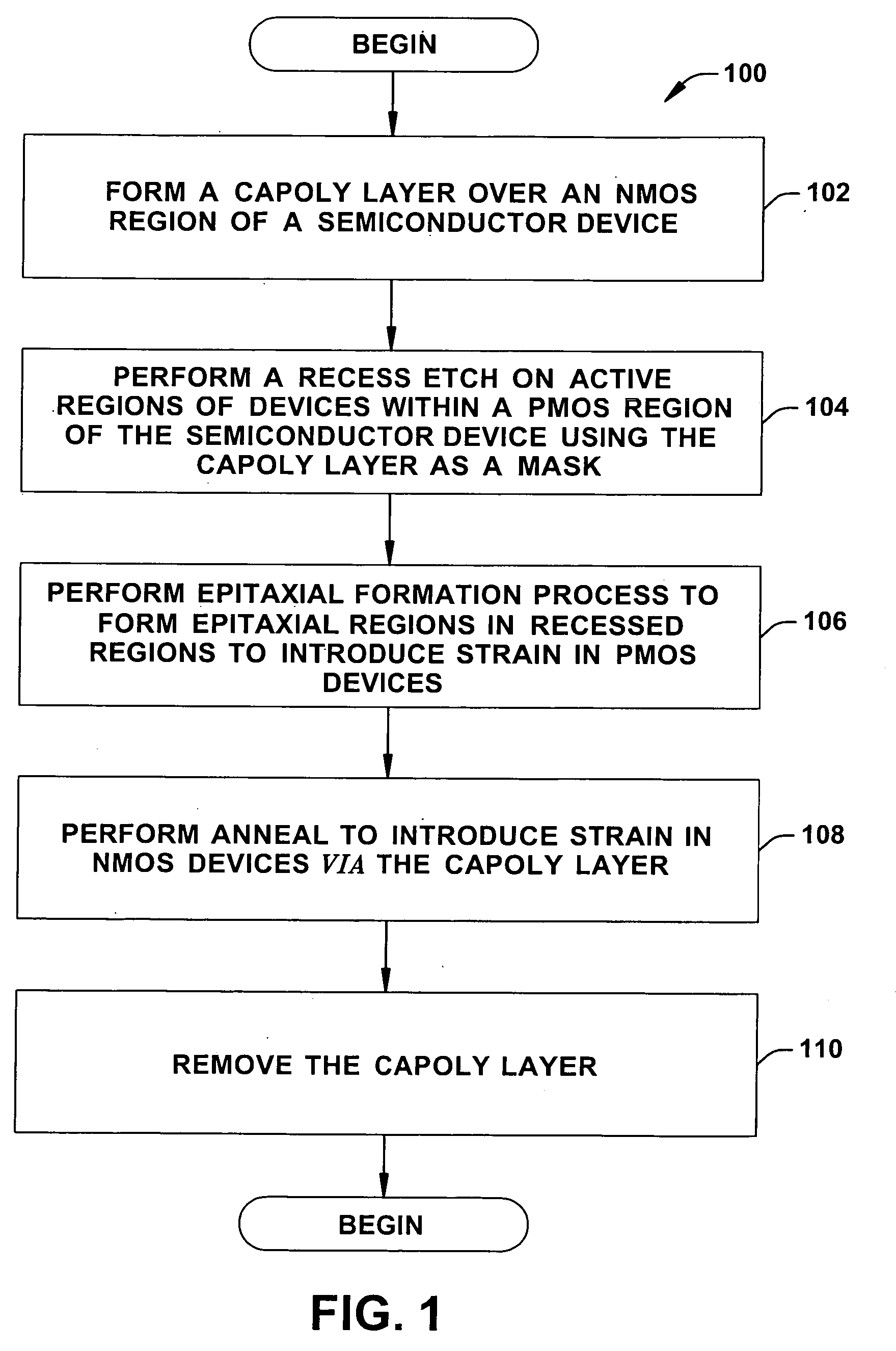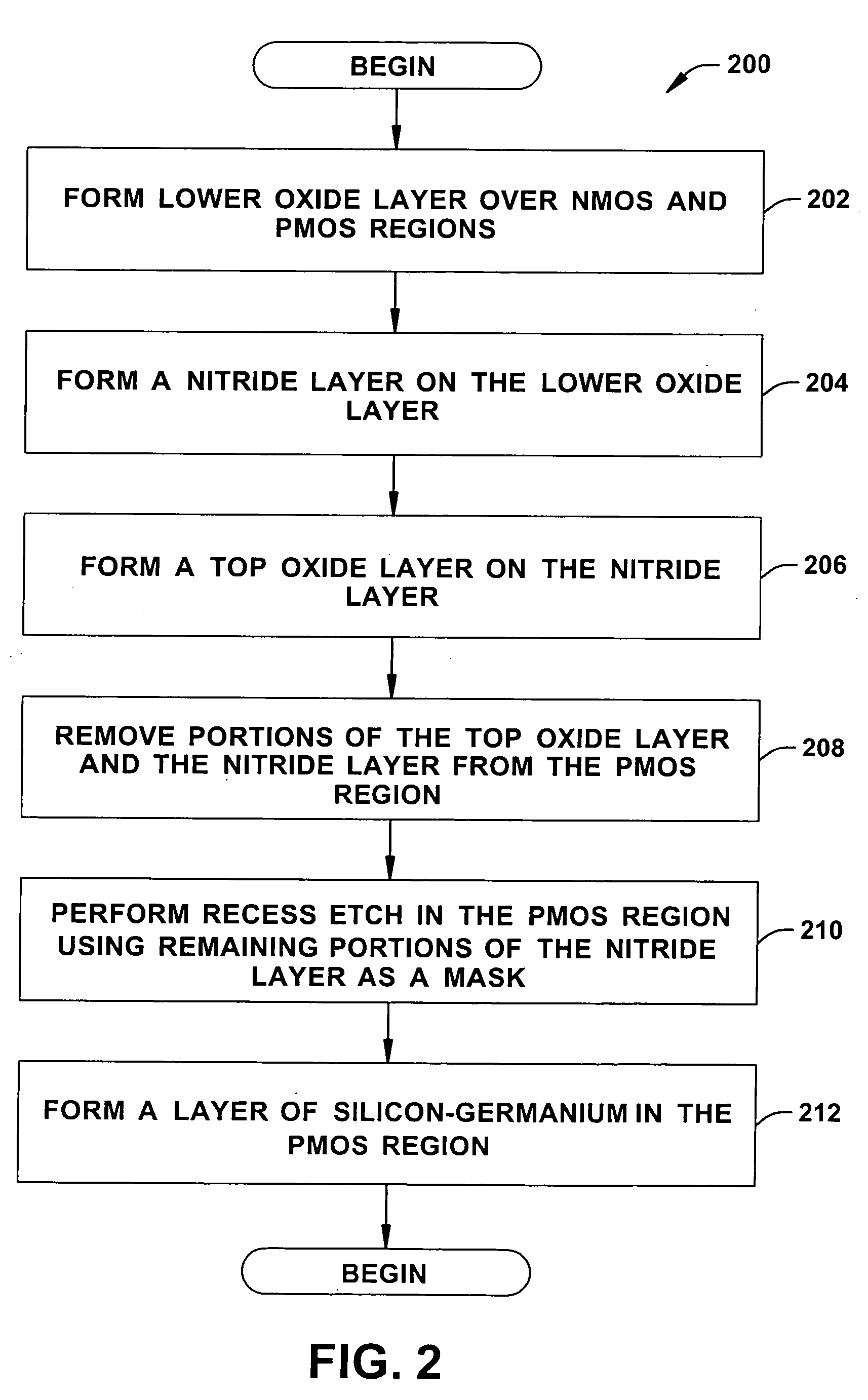Method to selectively recess ETCH regions on a wafer surface using capoly as a mask
- Summary
- Abstract
- Description
- Claims
- Application Information
AI Technical Summary
Benefits of technology
Problems solved by technology
Method used
Image
Examples
Embodiment Construction
[0015] One or more implementations of the present invention will now be described with reference to the attached drawings, wherein like reference numerals are used to refer to like elements throughout, and wherein the illustrated structures are not necessarily drawn to scale. The invention provides transistor structures and methods in which transistor mobility is improved while reducing masks employed in fabrication thereof.
[0016]FIG. 1 is a flow diagram illustrating a method 100 of fabricating a semiconductor device that selectively introduces strain into channel regions of transistor devices located within NMOS and PMOS regions of a semiconductor device in accordance with an aspect of the present invention.
[0017] The method 100 begins at block 102 wherein a CAPOLY layer, also referred to as a stacked poly cap, is formed over an NMOS region of the semiconductor device. The CAPOLY layer is formed by depositing and / or growing one or more layers of materials (e.g., oxide, nitride, a...
PUM
 Login to View More
Login to View More Abstract
Description
Claims
Application Information
 Login to View More
Login to View More - R&D
- Intellectual Property
- Life Sciences
- Materials
- Tech Scout
- Unparalleled Data Quality
- Higher Quality Content
- 60% Fewer Hallucinations
Browse by: Latest US Patents, China's latest patents, Technical Efficacy Thesaurus, Application Domain, Technology Topic, Popular Technical Reports.
© 2025 PatSnap. All rights reserved.Legal|Privacy policy|Modern Slavery Act Transparency Statement|Sitemap|About US| Contact US: help@patsnap.com



